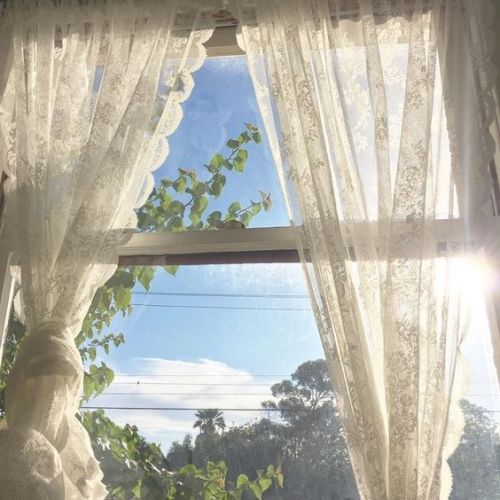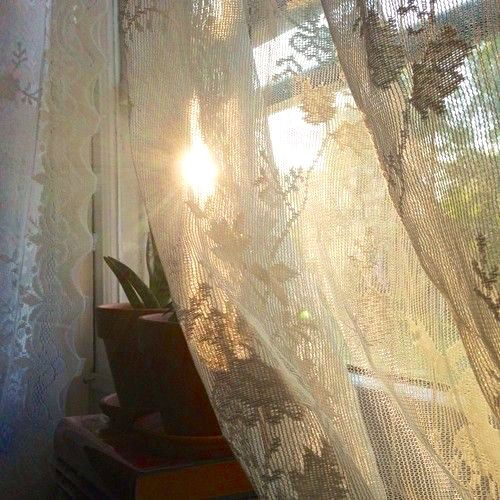I'm Max and my path is all about curiosity, growth + humanity. I'm into hearth and home, herbalism, land magic, and tapping into my heritage by learning about Chinese Taoist occultism. 🌎🌿🌟 Always down to make occulty friends, especially POC who are also exploring their own roots!
Don't wanna be here? Send us removal request.
Text
Devotional Acts to Deities of the Hearth, and Domestic and Textile Arts
These are just suggestions. Adapt to your own personal needs.
Knit, sew, crochet, weave or quilt - Learn, take lessons, create, or teach
Check fire alarms and carbon monoxide detectors
Clean your home
Volunteer/offer to help a new mother or the elderly to clean their home
Learn and cook a new recipe
Read or write cook books
Cook for guests
Create a kitchen altar
Donate clothes and food
Volunteer at food banks and soup kitchens
Create and keep a household notebook: meal planning, budgeting, recipes, what appliances need checking etc.
Hosting
Create a savings account for a future home
Volunteer with domestic abuse victims
Books for research: - ‘The Subversive Stitch: Embroidery and the Making of the Feminine’ by Rozsika Parker - ‘A Note on the Division of Labor by Sex’ by Judith K. Brown - ‘Women’s Work: The First 20,00 Years – Women, Cloth, and Society in Early Times’ by Elizabeth Wayland Barbet - ‘The Golden Thread: How Fabric Changed History’ by Kassia St Clair - ‘Hearth: A Global Conversation on Identity, Community, and Place’ by Annick Smith and Susan O'Connor - ‘Tribe: On Homecoming and Belonging’ by Sebastian Junger - ‘The Yellow House: A Memoir’ by Sarah M. Broom
Other media you may wish to consume: - The Cohesive Home Podcast
412 notes
·
View notes
Text
Are the Greek and Roman pantheons very similar? Why? And does every Greek god have a Roman counterpart and vice versa, or are there some unique deities to each? If so, who are some examples? What are the main differences between the pantheons?
–Anonymous
How do people who follow the Greek pantheon choose that one instead of the Roman pantheon, or vice versa? Many deities are the same, I think, so what’s the difference other than the names of deities? Cultural differences? Or do people not really choose one or the other? Do most people who worship one of those pantheons worship the other as well?
–Anonymous
The Greek and Roman pantheons are similar, yes! So similar, in fact, that they tend to get amalgamated into one “Greco-Roman” pantheon. People also like equating Greek deities with Roman deities, saying that “Aphrodite is Venus” and “Artemis is Diana”. This is also escalated by the fact that yes, the Romans did graft some Greek deities into their pantheon, such as Hercules/Herakles, Apollo and Aesculapius/Asklepios.
However, similar does not equal the same. There’s this huge misconception floating around that the Romans never had a pantheon of their own, and they instead stole the Greek gods, but this…simply isn’t true. See above for some deities that this is the case for, but overall the two pantheons are different.
(As an aside, I’m not trying to discount anyone’s UPG here that the two pantheons are the same, so I’m sorry if it’s coming across that way!)
There are several notable differences between the two: deities who seem to be the same across pantheons might have more functions in one than another (such as Ares and Mars, Mars being an agricultural god in addition to a god of war, and I don’t think Ares is associated with agriculture…). The way in which sacrifices are made is another difference: you generally cover your head with a veil when offering to a Roman deity, but not to a Greek deity. Temple design was also very different; Roman temples take after Etruscan temples, which are quite different from Greek temples.
Not every Greek god has a Roman counterpart, and not every Roman god has a Greek counterpart. The one Roman deity that really sticks out at me right now is Ianus, the two-faced god of doorways, keys, changes and transitions, and beginnings and endings. As far as I know, there is no deity in the Greek pantheon like Ianus.
There are also…way more deities in the Roman pantheon of just random things. Like Limentinus, god of the threshold of the home; Forculus, god of door panels; and Cardea, goddess of door hinges. And don’t even get me started on the deities involving the conception of children! Yikes D:
As a Roman polytheist, I worship and give honor to the Roman pantheon, not the Greek. I have had some interactions with Hermes, but that’s about the extent of it. However, that’s not to say that you couldn’t worship both pantheons, should you choose to do so!
I think people who choose either the Greek pantheon or the Roman pantheon are drawn to not only the character or functions of the gods therein, but also to the cultures behind the pantheons. For me, I am reeeeeeally interested in ancient Roman culture; ancient Greece is fascinating, too, but it just doesn’t hold the same draw.
-lucusantiquus
57 notes
·
View notes
Text
ROMAN PANTHEON
ANGERONA Goddess of secrecy. Angerone is portrayed with her mouth bound and sealed, her finger raised to her mouth in a gesture of warning. The ancients thought names powerful; the commonly known name of an individual or a community was often not the real name at all, the real name being a closely guard secret. Very probably the cult of Angerona guarded the secret name of the city of Rome. Little else is known of her.
ATTIS A god of vegetation, similar to Tammuz and Adonis. Imported together with his mother Cybele from Persia. Driven mad by the deranged love of his mother, Attis castrated himself under a pine tree. Attis’ priests were eunuchs.
BELLONA War goddess. Bellona’s priests were recruited from the gladiators, and emissaries were received at her temple
CYBELE An Asian goddess adopted by the Greeks and Romans. A healer, mistress of fertility and untamed nature, a protector in war. Cybele is always accompanied by two lions. Cybele granted immortality to those who worshipped her. Cybele’s priests danced wildly and mutilated themselves. Her festivals, held at the beginning of spring, were occasions for wild orgies.
FAUNA Goddess of fertility. Fauna’s festival, which seems to have been quite an orgy, was open only to women, being strictly forbidden to men.
FAUNUS God of crops and herds. An oracle. Faunus’ temple, the Lupercal, was supposed to have been the site where the she-wolf suckled Romulus and Remus. Goats and dogs were sacrificed at his festival, the Lupercalia, and priests dressed in newly skinned goat hides whipped women who wished to become pregnant with whips made of goatskin.
FEBRUUS The Etruscan god of the underworld, later associated with Dis Pater, the Latin equivalent of Hades. The month of the dead, February, is named after him.
FIDES God of faithfulness.
FLORA Goddess of flowers and blooming plants. Usually shown with a wreath of flowers in her hair. A favorite deity of courtesans, Flora’s festivals were held in April and May.
FORTUNA Goddess of fate and chance. Fortuna’s statue was kept veiled, because she was ashamed of the capriciousness of her favors. Fortuna is represented by the sphere, the ship’s rudder, the cornucopia, and the wheel. To this day, wheels of fortune can be found in casinos, and the wheel on the tenth card of the Major Arcana is Fortuna.
GENIUS A guardian who protects both individuals and homes.
JANUS Guardian of entrances and exits, the opener of all things who looks inward as well as outward, custodian of the universe. Janus’ two-faced image was usually displayed over doorways and gates. Janus signifies both past and future wisdom. Janus is the god of beginnings, so the first month of each year, the first day of each month, and the first hour of each day are dedicated to him. Janus was the first god to be mentioned in prayers, even before Jupiter.
LAR God of the house, a cheerful and beautiful youth.
MARS God of farming, war and springtime. Like the typical Roman citizen, Mars was first a farmer and then a soldier. The wolf, the oak and the woodpecker are sacred to Mars. Often identified with the Greek god Ares, but the differences are more important than the similarities. For one thing, the Romans liked Mars.
MITHRAS The god who dies and rises again, god of vegetation, the sun god, the Savior who who redeems mankind from evil. A Roman version of a Persian god. Especially popular among soldiers, Mithras was widely worshipped throughout the Roman empire and gave Christianity a run for its money. Mithras’ cult served a number of purposes and its organization was highly complex. A temple of Mithras served as a social club, a place of worship, a dramatic society, a magical society, an officers’ club, and much more. The worshippers of Mithras conducted elaborate ceremonies to which no woman was admitted. The worship of Mithras emphasized correct behavior in this world, which was the only way to win the favor of the god in the next. There were different degrees of initiation into the cult, each degree having its own name: the Crow, the Secret, the Soldier, the Lion, the Fathers and many more on up to the King of Kings, which was open only to those of royal blood. Initiates were placed under a grating upon which a bull had been slaughtered and were drenched in its blood, signifying the emergence from death to rebirth. Ceremonies generally took place in caverns or rooms made up to look like caverns, and involved the wild beating of drums, anointings with honey, the unveiling of hidden statues, and the use of hallucenogenic drugs.
OPS Goddess of the harvest. Identified with the Greek goddess RHEA.
QUIRINIAS A mystery. Originally a war god of the Sabines, later a state god of the Romans. One of the highest gods of ancient Rome, every bit as important as Mars or Jupiter, yet almost nothing is known today of Quirinias or his worship.
TELLUS MATER An ancient earth goddess. Pregnant cows were sacrificed on her festival, April 15. Tellus is one of the very oldest gods, dating back to the time before the Roman religion was formalized.
VESTA “The Shining One.” Goddess of domestic life and the hearth. Worshipped privately in the home and publicly in Vesta’s temple. In the home, Vesta lived near the hearth and was offered food and drink at every meal. The Vestal Virgins served her, and (apart from mothers who were allowed to bring offerings during festivals) were the only ones allowed to enter her temple. The Vestal Virgins, chosen only from the nobility, tended a sacred fire which was the symbol of the hearth of the nation. A strict vow of chastity was imposed on the Virgins, and a Virgin caught breaking the vow was walled up alive. In more than a thousand years, only twenty women were so punished.
Posted by, Phynxrizng
10 notes
·
View notes
Text
laeta Vestalia!
today we begin to celebrate Vestalia (7th-15th June). it is the celebration of the goddess Vesta, goddess of ritual fire, hearth-fire and home. she is also associated with chastity and purity.
the festival, in history, was the only time in which women other than Vestal Virgins could enter the Temple of Vesta. they would offer and pray to the goddess in hopes of receiving her blessing on their home.
today, you can light a ritual fire, pray and offer bread to Vesta for her blessing, as well as cleaning your house on the 15th, as the Vestal Virgins did in the temple.
11 notes
·
View notes
Note
I am interested in the Sicilian and Italian traditions! Can you direct me as to where to learn more about this/explain the basics of this practice? Thank you so much- your blog is great:)
Italian Witchcraft and FolkloreHey! That’s wonderful! They’re surprisingly difficult to find any accurate information on! My best resources are the article by Sabina Magliocco titled Witchcraft, healing, and vernacular magic in Italy, a less reliable article (that mixes witch-lore and folk magic all together) by J.B. Andrews called Neapolitan Witchcraft, and Carlo Ginzburg’s book The Night Battles about the benandanti in Friuli (Northeastern region of Italy).
If anyone knows any other sources feel free to list them!
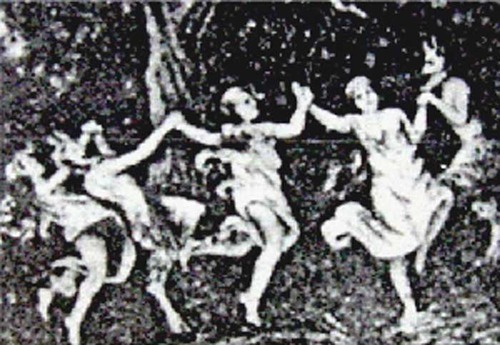

Italian witch lore is very old, as there have been legends of witches in this region for a very long, accountable period. The word strega (witch) most likely comes from the Latin strix (screech owl) which witches were thought to take the shape of in the night. The practice of witchcraft is called stregoneria, a male witch is a stregone, and a female witch is a strega. There are more legends of Italian witches in the south (particularly near Naples). One of the most famous is the story of the witches of Benevento, who convened beneath a walnut tree on a hill therein, and danced and worshiped the Devil. This tree was supposedly cut down.

There is a popular image of a witch who arises among Christian tradition in Italy, even still today. This witch is called Old Befana or Bella Befana(Bruta Befana, Bella Befana or Vecchia Befana) who is a good witch who lived alone in a small cottage. One day, three wise men knocked on her door. “Behold! The child of God is born, (yada yada) we’re going to find him and bring him gifts! Will you join us Old Befana?” Now, Old Befana was glad to hear the news and excited to meet the new babe and give it what gifts she could. However, she was not one to shuck her responsibilities so she said she would have to wait until her chores were completed. They agreed and she saw them off, before finishing her cleaning. Once her duties were completed, she packed up her presents for the babe, hopped promptly onto the broom she had just finished sweeping with, and flew out the chimney into the cold night. However, they had not told her how to find them again! Not wanting to deny the boy his gifts, she decided to give some to all the little children she passed on her way, as any might be the new born child of God. Every year on that same night, Old Befana rides out on her broom and deposits gifts for little children, in hopes that one day she will finally find the baby Jesus and give him the presents she has been holding all this time.In southern Italy, many of the tales of witches (streghe) and folk healers (fattucchiere, or ‘fixers’) tell of the songs they sing to work their magic. Unfortunately, this seems to be all anyone knows on the subject, and I can’t find any references or information on these songs! In lore, the witches of both benevolent and malefic natures are closely related or interchangeable with more faerie-like spirits. The Janare of Naples/Janas of Sardinia (lit. followers of Diana) are magical women said to live in Neolithic shaft tombs and are expert weavers and spinners. They sometimes intermarry with humans, but are very different from the cogas (or little cooks) of Sardinia, who are malefic witches that cook and eat their victims.
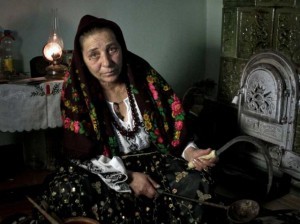
Most folk magic in Italy has died out, even in many of the rural areas. What is documented and what remains is all, unsurprisingly, Catholic magic. Much of it draws to saints, prayers, and Catholic holy tools. One name for this form of magic is benedicaria. However, much of it seems more agricultural or magical and less religious in nature. There is no point assuming this other source is pagan, because we could never prove where almost of any of it originated. Most witchcraft you will find today in Italy, especially in urbanized areas, is of a New Age or Neo-pagan persuasion. Neo-Wicca is about the best you can hope to find, and even that is comparatively rare to that found in Great Britain, Australia, and the U.S.In conversations about Italian magic and witchcraft, Raven Grimassi’s book Italian Witchcraft tends to come up. THIS BOOK IS UTTER BULLSHIT. HOGWASH. STUFF AND NONSENSE. It’s almost literally just Neo-Wicca with different names and some made up information. I’m not exaggerating. If you have this book, it’s better off as kindling than on your bookshelf. Just saying. Charles Leland’s book Aradia: The Gospel of the Witches is a pretty piece of poetry, and perhaps has some truths in it, but it can never be relied upon. His source is not credible, and the information doesn’t add up well. It is a beautiful book, but not an accurate account of Italian magic or witchcraft. Here are a few blog posts I have made relating to Italian witchcraft and folk magic:
The Curse of the Lemon and Pins
Neapolitan Flying Ointment
The Use of Stones in Italian Folk Magic
Charm Against the Evil Eye
To Cure Jaundice
To Cure Worms
To Bind an Eagle from your Flock
To Keep Birds from the Crops

1K notes
·
View notes
Photo

An emissary of Nefertem reminds you that at every sunrise, the world is created anew. A new beginning awaits you. – Nefertem is an Ancient Egyptian god associated with perfume and flowers (especially the blue lotus), healing, and the newborn sun. Though He was most frequently depicted as a human with a lotus over His head, He could also be shown as a lion as the son of Sekhmet or Bast. Lotus flowers rise up from the muddy waters to bloom at sunrise, just as the sun rises from the dark every morning to illuminate the world once again. In some creation stories, Nefertem is the child-god born from the first lotus emerging from the primeval waters.
366 notes
·
View notes
Text
is it possible to worship the Moon as the Maiden, Mother and Crone ?? what are some of yalls experiences ??
52 notes
·
View notes
Photo


EAST ASIAN MYTHOLOGY MEME:
[1/9] CHINESE GODS AND GODDESSES | LONG MU
Long Mu [龍母] or Mother of Dragons was a Chinese woman who was deified as a goddess after raising five infant dragons.
Wen Shi frequently went to the Xi River to fish and wash clothes for her family. On one such errand, she found a large smooth white stone along the banks of the river. She took the beautiful stone home, but later discovered that the stone was actually an egg, from which hatched five baby snakes. Wen Shi’s family was poor, but Wen Shi saved the best food she had for her baby snakes and fed them by hand.
As the snakes grew, they helped Wen Shi catch fish at the Xi River. The snakes were natural swimmers and became very good at catching fish. The snakes eventually matured into five powerful dragons. In Chinese culture, dragons are considered spirits of water, and have the power to control the weather; during a drought, therefore, Wen Shi asked her dragon children to summon the rain for her village. When rain came and ended the drought, the grateful villagers gave Wen Shi the name “Mother of Dragons.”
3K notes
·
View notes
Text
Building a Magical Home
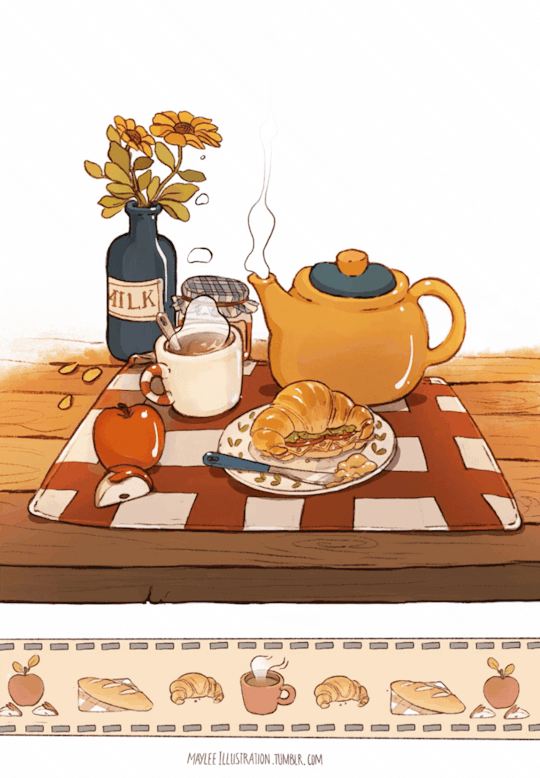
One of my favorite quotes about the magic of homemaking comes from Cory Hutcheson, host of the New World Witchery podcast. He says, “Home is a transformational act. It is the thing you do to turn a space into a space… that is full of ritual and significance and meaning. So there is sort of this ongoing relationship you have with the space that makes it a home.”
The act of creating a home, of making a space your own, is inherently magical. But if you want to make your space feel a little more witchy, here are some ideas to get you started.
Charms and Talismans
Making your own magical objects can be a powerful way to bring magic into your space. The best thing about making your own charms is that you can make them look however you want, so it’s easy to disguise them as ordinary household objects. You can make a charm for any intention by combining objects based on their magical correspondences.
I’ve talked about protective charms in previous posts, so I’m not gonna spend a lot of time on it here. The simplest protective charm is keeping a large piece of iron under your bed to keep away nightmares, evil spirits, and negative energy. You could also make your own protection charm, like a witch bottle.
You can create a “happy home” charm to bring peace, harmony, and happiness into your home. This charm could include herbs like basil, rosemary, lavender, peppermint, and/or bay leaves, as well as other items that you associate with peace and good fortune, like lucky coins, crystals, or black cat fur. Write your desires for a harmonious and happy home on a piece of paper, fold it up, and add it to the charm. You could store these items in a green bag, bury them in your backyard (in this case, make sure you’re only using biodegradable plant matter — leave out the coins and crystals), or place it inside a household object like a lamp or an end table.
If you suffer from insomnia or other sleep issues, try making a dream charm to help you sleep well and have sweet dreams. To make a simple dream charm, fill a blue or purple bag with lavender, chamomile, peppermint, and any other objects that you associate with peace, restfulness, and sleep. If you want to have lucid dreams or receive psychic messages in your dreams, include a bit of mugwort. Place the charm in your pillow or under your mattress. (I personally swear by this one, as it’s helped a lot with my insomnia.)
Charms are great for homemaking magic because you’re actually creating a magical object, which can then become a permanent fixture of the space.
Magical Decor
You can use magical items to decorate your home to bring certain qualities into that space.
Hanging or displaying a broom is said to bring good fortune, protection from evil, and good hospitality. Cauldrons are used to represent the Goddess, rebirth, and raw potential. Horseshoes hung above door frames bring safety and luck to all who cross under them, and keep unwanted guests away. If you can get them legally and ethically, animal bones, teeth, claws, and feathers can represent the spirit and energy of that animal. You can also put up images of spiritual and occult symbols — I have an image of the Sun tarot card hanging in my bedroom to promote positivity and growth.
If you need to be a little more subtle with your witchy decorations, working with the magic of color is a great way to do that. Gathering a lot of items of a single color in one room changes the energy of that room. Here’s a quick guide to give you some ideas:
Yellow is associated with divination, mental clarity, the element of air, success, communication, and inspiration.
Purple is associated with divine power, spiritual awareness, mystery, astral travel, magic, and authority.
Blue is associated with healing, psychic abilities, the element of water, peace, truth, and patience.
Red is associated with protection, the fire element, sex, power, vitality, and love.
Orange is associated with ambition, creativity, breaking through blockages, and career success.
Pink is associated with romantic love, friendship, self love, compassion, and emotional well-being.
Green is associated with nature, herbalism, the earth element, money, wealth, prosperity, and luck.
Brown is associated with grounding, animal magic, stability, and balance.
White is associated with purification, cleansing, the full moon, new beginnings, healing, and spiritual growth.
Black is associated with protection, truth, outer space, banishing, and transition.
Decorating your home with colors that are meaningful to you can create a powerful magical space. You may also have your own color associations (for example, yellow is a very “happy” color for me), so feel free to incorporate those into your decor as well!
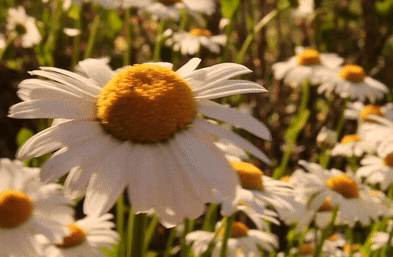
Growing Magical Houseplants
Most witches feel a very deep connection to nature and draw power from the natural world, but we can’t all live in a cottage in the heart of the forest. Even if you live in a tiny apartment in the city, you can still bring nature into your space by keeping houseplants. Many popular houseplants have magical uses, and many popular magic herbs can be grown inside. Here are a few to get you started.
Aloe. This is one of my favorite plants. Aloe brings luck and protection, especially protection on an energetic/spiritual level. I like to keep aloe in my bedroom to protect me while I sleep, as well as to bring luck and inspiration while I’m working at my desk.
Basil. Basil is very popular in money spells, and will attract prosperity and luck to your home. However, it also has protective properties — both spiritual protection and protection from bugs, since basil is a natural insect repellent! Basil can also be used in love spells, and is just generally a good plant to have around for good vibes.
African Violet. This flowering plant attracts positive spiritual energy into your space. It has associations with the moon and the water element, and is very good for promoting spirituality and psychic power.
Rosemary. Rosemary is one of those herbs that every witch should have on hand. It’s so darn versatile, it can be used as a substitute for virtually any other herb, and can be used for almost any intention. Some of the most common magical associations for rosemary include: cleansing, purification, protection, healing, mental activity, and enhancing memory. According to author Deborah J. Martin, there’s an old English saying that, “Where rosemary grows, the woman rules the house.” Like basil, rosemary is a natural insect repellent.
Lavender. Lavender brings peace, love, and gentleness, which makes it a perfect addition to any home. It can be used in spells for cleansing and purification, enhancing psychic abilities, and stress relief. Lavender is also a powerful addition to love spells. Keeping lavender in the bedroom can aid in restful sleep, while lavender in the kitchen will bring harmony to the home.
Sage. Sage is the most talked about cleansing herb, and with good reason. Unfortunately, a lot of the sage bundles you can buy at metaphysical stores are made with white sage (Salvia apiana), which is sacred to Native American peoples and is endangered due to overharvesting. Instead of buying those, why not grow your own garden sage (Salvia officinalis), which has a lot of the same magical properties? Growing sage in your home will purify the space and protect those who live there. Sage also has an association with wisdom and mental prowess.
Hoya. Hoya is a common houseplant that you’ve probably seen even if you don’t know it by name. It has a distinctive appearance with waxy, dark green leaves and clusters of white, star-shaped flowers. Hoya aligns and balances the energy centers within your body, as well as in the surrounding space. It’s associated both with grounding and with spiritual openness, so it can be great for balancing the two.
Peppermint. Peppermint has a variety of magical uses, but my favorite way to use it is for gently opening up blockages and getting things moving. It’s great for cleansing, but is more gentle than rosemary or sage. Place it in any room where you tend to do a lot of healing work, or where you could use some peace and love. Peppermint is also used in dream magic, so growing it in the bedroom may bring on vivid or lucid dreams.
Orchid. Orchids are used in magic for love and lust. Historically, orchid has been used in folk medicine to promote male virility and “Jezebel root,” used in American folk magic to attract wealthy male lovers, is a type of orchid root. If you live with a significant other, try growing an orchid in the bedroom to promote passion in your sex life. Otherwise, grow orchids in your home to promote love or to attract romance.
Catnip. If you have cats, they’ll love this one. Catnip is actually a type of mint, and has strong lunar associations. It’s said to make one more charming and attractive, and is especially useful for attracting women. At the same time, catnip promotes courage and fierceness. It is also, of course, associated with cats and feline deities, so this is definitely a plant you’ll want to keep around if the cat is one of your animal guides.
If you have a yard space that you can turn into an outdoor garden, your magical plant options are limited only by your local ecosystem. Some outdoor plants that have magical uses include roses, sunflowers, rue, lemon balm, and strawberries.
Creating an Altar
Altars are focal points of magical and spiritual energy. Many people, both witches and non-witches, find that having a designated space for their spiritual practice creates a deeper sense of sacredness and purpose.
An altar can serve lots of different purposes. Many witches use their altar as a magical work space to prepare spells, meditate, and do divination. You may choose to dedicate your altar to a deity, your ancestors, or some other spirit(s) you work with. You can also build altars for specific intentions, such as a money altar or a love altar — performing rituals at this altar everyday is a powerful method for manifestation. You altar may be some or all of these things, or it may just be a place to sit and connect with the spiritual.
You can set up an altar on any flat surface, like a shelf or table, or inside a container like a jewelry box. Your setup can be as simple or as elaborate as you like. An altar can be huge and complex, with statues and candles and flowers, or it can be as simple as a tealight and an incense burner. It’s all about what appeals to you.
Resources:
New World Witchery pocast, “Episode 143 — The Magical Home”
Southern Cunning: Folkloric Witchcraft in the American South by Aaron Oberon
Wicca: A Guide for the Solitary Practitioner by Scott Cunningham
“Candle colors and their meanings” by Michelle Gruben on the Grove and Grotto blog
Green Witchcraft by Paige Vanderbeck
A Green Witch’s Cupboard by Deborah J. Martin
“The Magic of Orchids in Wiccan Love Spells & Rituals” on the Art of the Root blog
22K notes
·
View notes
Photo


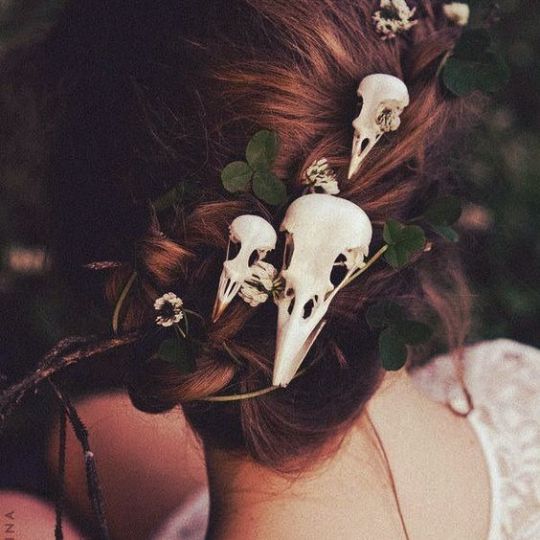

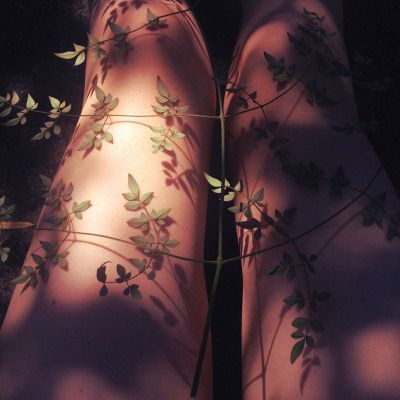




moodboard: brigid
↦ irish goddess of the spring season, poetry, smithcraft, and healing
2K notes
·
View notes
Text
Things Westerners Need to Know About Shinto
We worship kamisama, not ‘gods’. If you have to, ‘deities’ is OK to say but kami are not gods.
It is not okay to combine Shinto with anything other than Buddhism, which it has been historically connected with. If you practice something else, keep it separate.
Do not use Shinto or the kami in your western witchcraft or paganism. Those are very separate. Japanese culture has its own methods of sorcery and such which I will not share here as of now.
It is imperative that you use the appropriate suffixes for kamisama. Post on that upcoming.
It’s “Shinto”, not “Shintoism”. “Shinto practitioner” not “Shintoist”.
Don’t exoticize it. Orientalists GTFO.
Shinto is an open tradition. That said, there are certain rules to follow, and you still must keep in mind that you are an outsider to the culture and need to learn about it. Just because it lacks a doctrine does not make it a free-for-all.
1K notes
·
View notes
Text
Chinese folk magic: 🍑PEACHES🍑
During this ongoing process of picking my nanna’s brain on Chinese folk practices (which I grew up around due to her babysitting me 24/7 but I didn’t pay attention because I was a lil’ shit), I realized something very interesting.
Anyone who is familiar with Chinese and Japanese cultures, knows that the peach is a tree of great significance in their native folkloric beliefs. But in Chinese practices specifically, the peach has so many different uses attributed to each different parts of the plant. It’s very interesting to see how so many drastically different associations can be attributed to one plant.
The peach blossom: this pretty bright pink flower represents romantic love, lust, bond, and deep friendship.

The peach fruit: the actual fruit is a symbol of longevity and long life, as well as wisdom which comes with old age. Traditionally, a giant steamed bun would be made in the shape of a peach for your birthday, and little sweet red cakes with sweet filling would be presented to the elders of the household on certain festivals to wish them a healthy long life.

The peach wood: the number one and most powerful tool for exorcism and a piece of peach wood carved into a sword hung at your door or gate WILL keep any and all demons/evil spirits/unwanted entities away. The same sword would also be an important tool for Taoist priests/shamans/sorcerers during exorcism rituals.It is believed that even a chunk of the wood with a crude drawing of the “Men’shen”, the deity of doors/gates/entryways, is one of the most potent forms of protection for one’s home.

1K notes
·
View notes
Photo


19.4g gigantic moonstone piece
Everything is 50% off due to the loss of my job.
Price reduced from 400 to 200usd
The-Crystal-Glossary
258 notes
·
View notes
Text


20.5 carat polished fire opal.
Message me to purchase, you help support a local witch. 💫🌙⭐
1K notes
·
View notes
Photo

Cleaning and tidying is never a fun activity, but with the use of some domestic magick it can become an enchanting and Cleansing experience!
Here are some tips to make your next housework day magickal!
💧add some peppermint or lavender essential oil into your cleaning wash for peace and extra Cleansing
💧wipe down the walls and surfaces with moon water with added peppermint oil. Your space will smell amazing
💧put on some witchy music or music that corresponds with your intent you want in your space
💧burn some incense or oil in a diffuser to cleanse the air
💧 Sage your living areas
💧when you’re sweeping with a broom, imagine that you’re sweeping negative energy out!
💧put on clean bedding and spray your sheets with a sweet Sleep Mist (recipe is on my blog)
💧sweep your windowsills and place crystals that love the sun on them
💧clean your altar space and redo it
💧find vegetable cuttings and biodegradable leftovers you can mix into compost to nourish your plants
💧when cleaning the floor, pour your cleaning liquid in the shape of a sigil. Wipe and scrub to charge and fire!
💧 draw sigils on your dishes with dishwashing liquid before you wash them
💧wash old jam jars and recycle them to hold moon water or spells
💧visualize negativity leaving your space when you take out the trash
💧If you can put chalk on your floors, draw sigils or write messages under your carpets
💧create or renew any wards you have put up
💧Enchant your mirrors to show your inner beauty
Happy Cleaning!
🦋💧Aphroditiful💧🦋
4K notes
·
View notes

